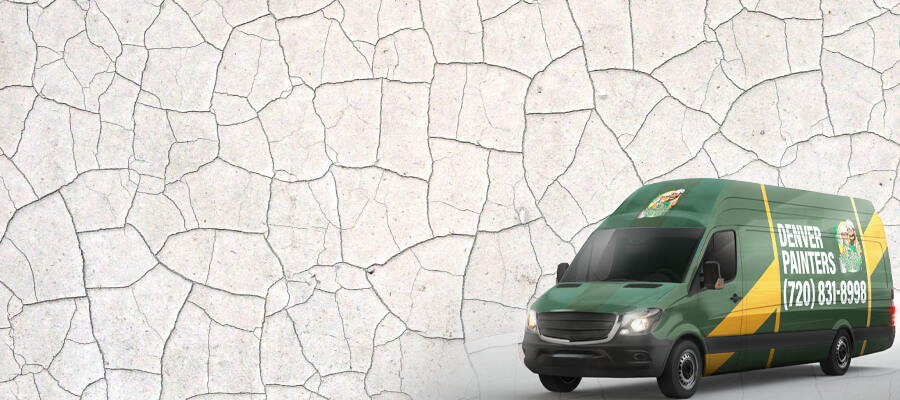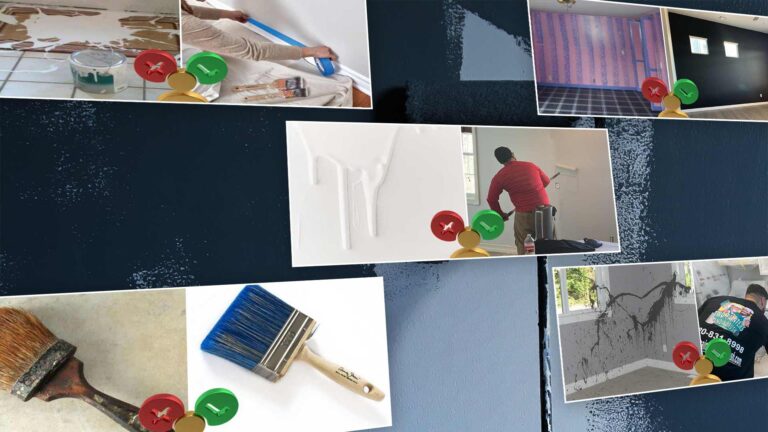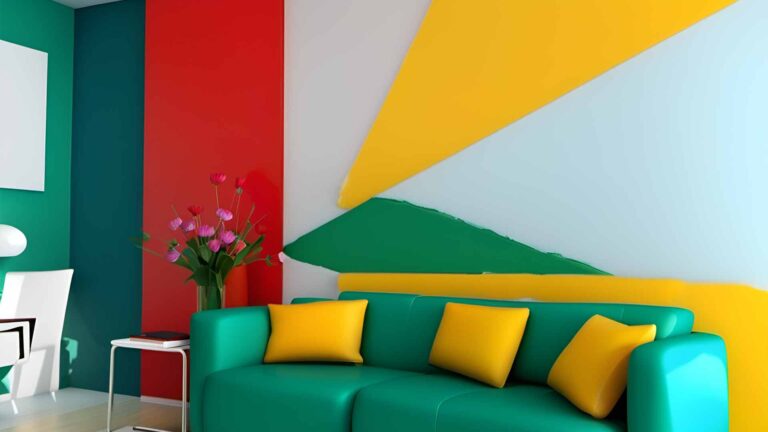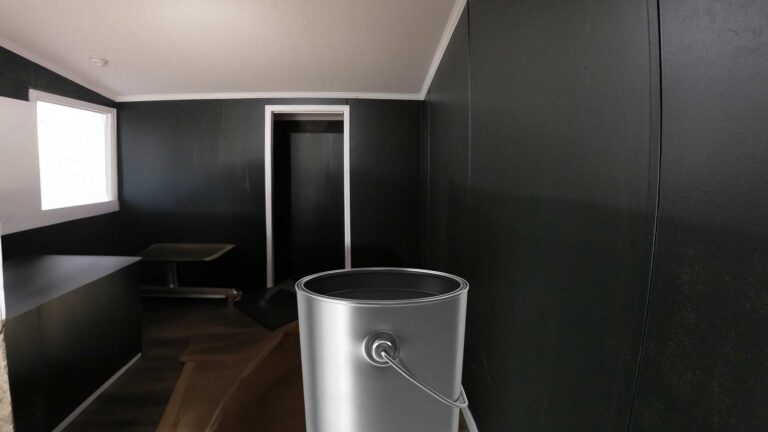Adapting Paint Choices to Denver’s Distinctive Climate and Weather Conditions
Denver’s unique climate can have a significant impact on the type of paint and colors you choose for your home or commercial property. With its semi-arid continental climate, Denver experiences a wide range of weather conditions that can affect paint performance and durability. In this article, we will discuss how Denver’s climate influences paint choices and offer recommendations for selecting the right paint products and colors to withstand the local weather.

Understanding Denver’s Climate
Denver’s climate is characterized by hot summers, cold winters, and rapid temperature fluctuations. The city also experiences low humidity levels and intense sunlight due to its high altitude. These factors can take a toll on paint, causing it to fade, crack, or peel over time. To ensure long-lasting results, it’s crucial to consider the local climate when choosing paint for your interior painting and exterior painting projects.

Choosing the Right Type of Paint
Denver’s climate calls for high-quality, durable paint products that can withstand temperature fluctuations and intense sunlight. When selecting paint for your project, consider the following factors:
- UV Resistance: Look for paint products with excellent UV resistance to prevent fading and color changes due to sunlight exposure. Check out our blog for recommendations on UV-resistant paint brands that perform well in Denver’s climate.
- Flexibility: Paints with greater flexibility are less likely to crack and peel as they can better accommodate temperature-related expansion and contraction. These paints are ideal for Denver’s fluctuating weather conditions.
- Moisture Resistance: Although Denver has low humidity levels, it’s essential to choose paint that resists moisture to prevent peeling and blistering. This is particularly important for exterior painting projects, where paint is exposed to snow, ice, and rain.

Selecting the Best Colors
When choosing colors for your Denver property, consider the following tips to ensure long-lasting and attractive results:
- Lighter colors tend to hold up better in intense sunlight, as they reflect UV rays and resist fading more effectively than darker shades. Explore our guide on choosing the right paint color for your Denver home for inspiration.
- Opt for colors that complement Denver’s natural landscape and architecture. Earth tones, such as beige, taupe, and light gray, are popular choices that blend well with the surroundings.
- When selecting colors for kitchen cabinet painting, consider the room’s natural light levels and how Denver’s sunlight may affect the appearance of the paint color.
Additional Considerations
When undertaking a painting project in Denver, consider hiring professional painters to ensure optimal results. Professional local painters have the expertise and experience to handle Denver’s climate challenges, from popcorn ceiling removal to wallpaper removal. We can guide you in selecting the right paint products and colors for your specific needs.

Navigating Denver’s Climate for Optimal Paint Selection and Performance
Denver’s unique climate can have a significant impact on your paint choices, from the type of paint to the specific colors that hold up best in local weather conditions. By understanding these factors and selecting high-quality, durable paint products, you can create a beautiful and long-lasting paint job on your residential or commercial property. Following the tips above will help ensure lasting results and keep your Denver home looking its best. Contact our team today at (720) 831-8998 for more information on the best painting solutions for Denver’s climate.
Frequently Asked Questions about Paint and the Environment
Paint can have various impacts on the environment, from its production to its application and disposal. In this FAQ, we will discuss the environmental implications of paint, the ideal temperature conditions for painting, and the most environmentally friendly paint options.
 What is the impact of paint on our environment?
What is the impact of paint on our environment?
Paint can have several environmental impacts, including the release of volatile organic compounds (VOCs) during its application, which contributes to air pollution and can be harmful to human health. Additionally, the production of paint involves the extraction and processing of raw materials, which can result in habitat destruction, resource depletion, and pollution. Improper disposal of leftover paint can also contaminate water sources and harm aquatic life.
 What temperature should you not paint outside?
What temperature should you not paint outside?
As a general rule, it is not recommended to paint outside when the temperature is below 50°F or above 90°F. Painting in extreme temperatures can result in poor adhesion, longer drying times, and an uneven finish. Always consult the paint manufacturer’s guidelines for specific temperature recommendations.
 What is the best temperature to paint in?
What is the best temperature to paint in?
The ideal temperature for painting is typically between 60°F and 80°F. In this range, paint can adhere properly to surfaces and dry evenly. It is also essential to consider humidity levels, as high humidity can prolong drying times and affect paint performance.
 What is the most environmentally damaging component of paint?
What is the most environmentally damaging component of paint?
The most environmentally damaging component of conventional paint is often the volatile organic compounds (VOCs). VOCs are emitted as paint dries, contributing to air pollution and posing health risks to humans. They can also cause ground-level ozone formation and contribute to smog.
What is the most environmentally friendly type of paint?
The most environmentally friendly type of paint is typically low-VOC or zero-VOC paint. These paints emit fewer harmful compounds into the air and are better for indoor air quality. Other eco-friendly paint options include natural or plant-based paints made from renewable resources, such as clay, lime, or milk. These paints have lower environmental impacts during production and often contain fewer toxic ingredients.
 What are three possible environmental hazards associated with painting and decorating?
What are three possible environmental hazards associated with painting and decorating?
- Volatile Organic Compounds (VOCs) Emissions: Many conventional paints and solvents contain volatile organic compounds that are released into the air during and after the painting process. VOCs can contribute to air pollution, ground-level ozone formation, and smog. They can also have negative effects on human health, causing respiratory issues, headaches, and other ailments.
- Waste Generation and Disposal: Painting and decorating projects often generate waste, such as paint cans, brushes, rollers, and drop cloths. Improper disposal of these materials, especially leftover paint, contaminates soil and water sources, posing risks to both the environment and aquatic life. Additionally, the production of paint and decorating materials involves the extraction and processing of raw materials, which can lead to resource depletion and environmental degradation.
- Indoor Air Quality: Painting and decorating can negatively impact indoor air quality due to the release of VOCs, particulates, and other harmful substances. These pollutants can cause health problems, particularly for sensitive individuals such as children, the elderly, and those with pre-existing respiratory conditions. Ensuring proper ventilation during and after painting, as well as using low-VOC or zero-VOC paint products, can help mitigate these risks.
 Is water-based paint better for the environment?
Is water-based paint better for the environment?
Yes, water-based paint is generally considered better for the environment compared to oil-based paint. There are several reasons why water-based paint is a more environmentally friendly option:
- Lower VOC Emissions: Water-based paints typically have lower volatile organic compound (VOC) content compared to oil-based paints. VOCs contribute to air pollution, ground-level ozone formation, and smog. They can also negatively affect human health, causing respiratory issues, headaches, and other ailments. By using water-based paints, you can reduce the release of harmful VOCs into the atmosphere.
- Easier Cleanup: Water-based paints can be easily cleaned up with just water, eliminating the need for harsh chemical solvents, which can contaminate water sources and harm aquatic life. Oil-based paints require the use of chemicals for proper cleanup, increasing the potential for environmental harm.
- Faster Drying Times: Water-based paints generally dry faster than oil-based paints, reducing the amount of time that the paint emits VOCs and other pollutants into the air. This can help minimize the impact on indoor air quality and the environment.
- Lower Toxicity: Water-based paints often contain fewer toxic ingredients compared to oil-based paints, making them safer for both the environment and human health. This is particularly important when it comes to disposal, as leftover paint and waste materials pose fewer risks to soil and water quality.

Making Informed Choices for Eco-Friendly Painting Projects
Understanding the environmental impacts of paint and the ideal conditions for painting is crucial for making informed decisions about your painting projects. By choosing environmentally friendly paint options and following the manufacturer’s guidelines for temperature and humidity, you can minimize the negative effects of paint on the environment and achieve a successful painting outcome.











